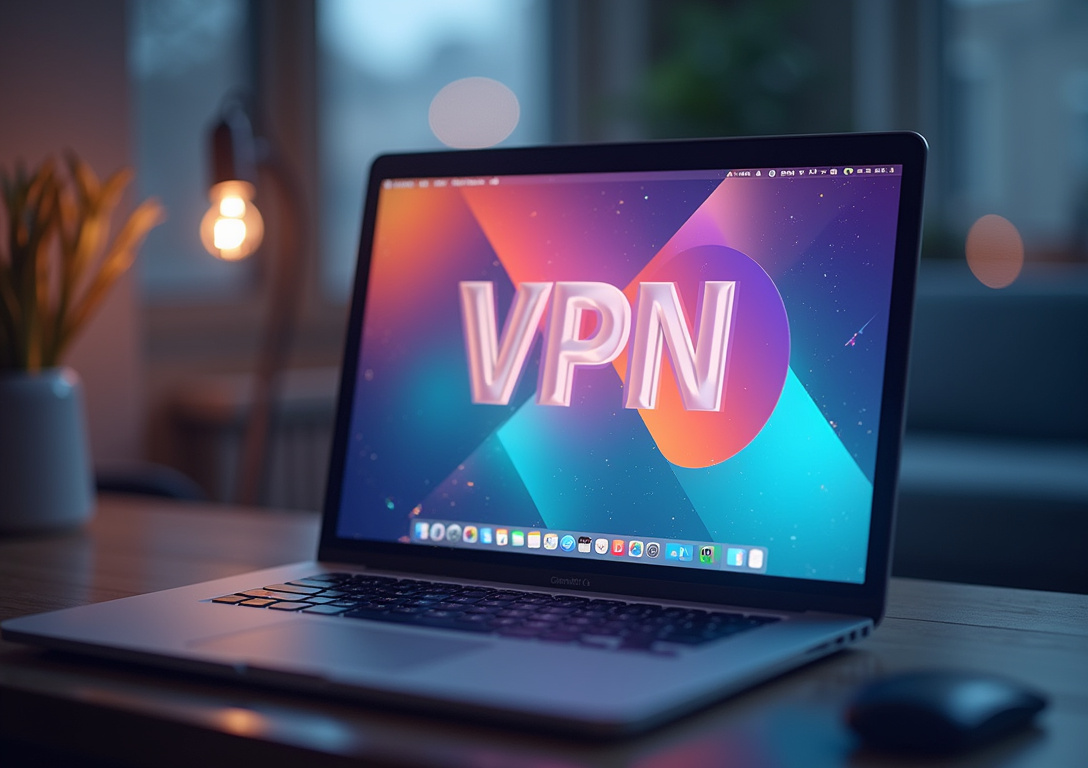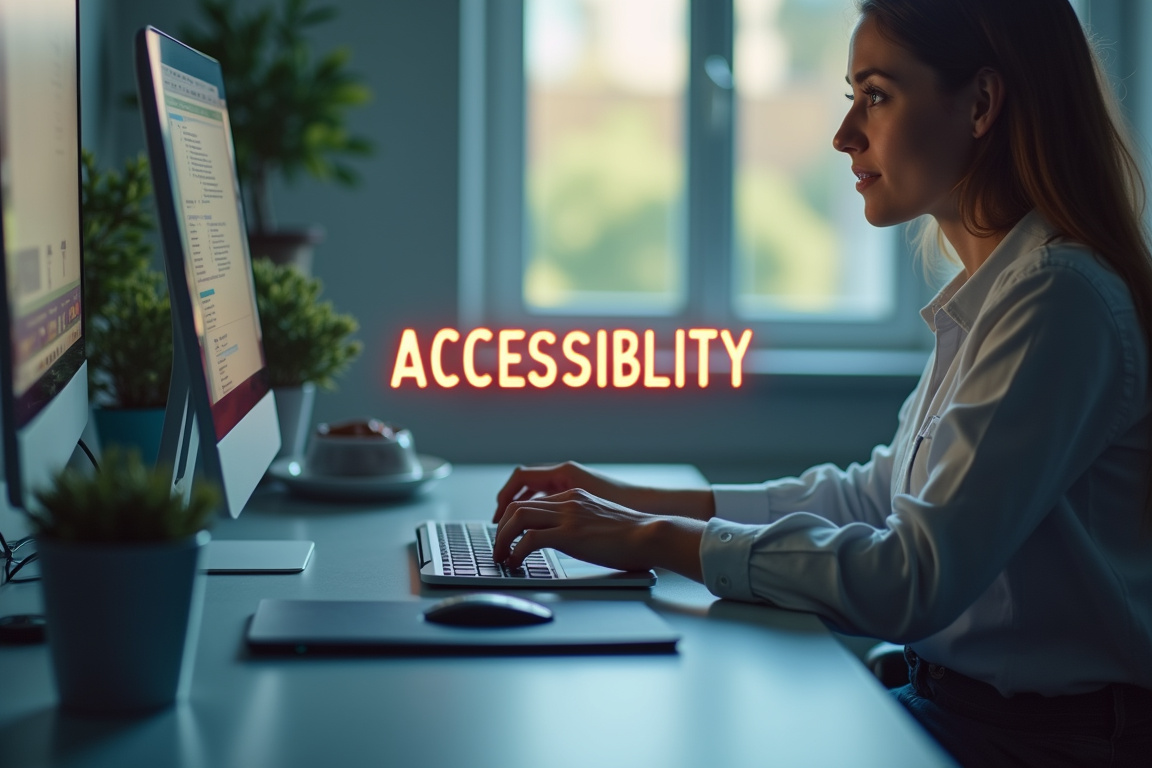Identifying the Most User-Friendly VPN Interfaces

Table of Contents
The Importance of User-Friendly VPN Design
In today's digitally interconnected world, safeguarding online privacy has become paramount. Virtual Private Networks (VPNs) have emerged as essential tools, offering a secure tunnel for internet traffic, shielding sensitive data from prying eyes, and enabling access to geo-restricted content. However, the effectiveness of a VPN isn't solely determined by its encryption strength or server network size.
Crucially, its accessibility and *easy use* hinge on a *user-friendly VPN* interface. A cumbersome or confusing interface can deter even tech-savvy individuals, rendering robust security features virtually useless. This article dives deep into the realm of VPN interfaces, meticulously examining the elements that contribute to a seamless and intuitive user experience.
Our focus is on identifying the traits of a *user-friendly VPN*, exploring what constitutes an *intuitive interface*, emphasizing the importance of *easy use*, and highlighting the advantages of a *convenient VPN* while also acknowledging the centrality of *functionality*. We will explore key design principles, clear navigation, easily understandable terminology, and visual cues that shape the ease of use of modern VPNs. This article aims to empower readers to make informed decisions when selecting a VPN, choosing a solution that not only offers robust security but also prioritizes accessibility and user satisfaction.
The evaluation of VPN interfaces must acknowledge the diverse range of users, from tech novices to seasoned professionals. A truly *user-friendly VPN* should cater to both ends of the spectrum, offering a simplified experience for beginners while providing advanced customization options for experienced users. This entails a design philosophy that balances simplicity with depth, allowing users to gradually explore and leverage the full potential of the VPN without feeling overwhelmed.
The central screen of a *user-friendly VPN* should show a clearly displayed connection status alongside the chosen server location, ideally pinpointed on a map. A prominent and easily accessible "connect" and "disconnect" button is a must. Simple one tap connection methods greatly improve the *easy use* and overall convenience of using a VPN on a day to day basis.
For additional settings, like the kill switch, split tunneling etc. these should be easily found on the settings menu, and also feature a short description of the utility and specific scenarios where the function is handy. Another consideration is the language used in the application.
All functions and general descriptions must be in a simple easily understandable language, ideally without any technical jargon. This plays a huge part in whether a VPN can be deemed as intuitive or not to all users. For example instead of using phrases as "DNS Leak Protection" an application can use "Prevent your Browsing Activity being tracked by your ISP" and still present the feature in an intuitive manner.
Furthermore, the *functionality* of the VPN interface extends beyond basic connection management. Advanced features such as a kill switch (which automatically terminates internet access if the VPN connection drops), split tunneling (allowing users to selectively route traffic through the VPN), and custom DNS settings should be readily available. However, these features should be presented in a clear and understandable manner, reducing the likelihood of accidental misconfiguration.
Visual cues, such as tooltips and interactive tutorials, can significantly enhance the usability of these advanced settings. Finally, the adaptability of the VPN interface to different platforms is crucial. A *convenient VPN* should offer a seamless experience across desktops, laptops, tablets, and smartphones, with interfaces adapted to the specific characteristics of each device.
Mobile apps, in particular, should be optimized for touch interaction, allowing for smooth navigation and *easy use* on smaller screens. Compatibility with a wide range of web-browsers as extensions is also a good metric to decide the product's degree of usability, since that can improve the day to day use of the tool. By carefully considering these factors, users can significantly enhance their online security posture without sacrificing ease of use or productivity.
Finding a VPN that seamlessly integrates into users' daily routines, providing rock-solid protection without unnecessary complexity or frustration are the marks of a well designed VPN.
Key Elements of an Intuitive VPN Interface
The core of a *user-friendly VPN* experience lies in its *intuitive interface*. This goes beyond mere aesthetics; it's about creating a seamless workflow that allows users to connect to a server, adjust settings, and manage their VPN connection without confusion or frustration. An intuitive interface starts with clear and concise navigation.
Menus should be logically organized, using recognizable icons and labels that accurately reflect their functions. Avoid jargon or overly technical terms that may be confusing to non-expert users. Simplicity is key.
The main screen should prominently display the connection status, the chosen server location, and a clear "connect" or "disconnect" button. Advanced settings should be easily accessible but not obtrusive, allowing users to customize their experience without being overwhelmed. Ideally, the interface should be self-explanatory, guiding users through the process with visual cues and helpful tooltips.
Consider the design language. A clean, uncluttered design with a consistent color palette enhances usability. The use of visual aids, such as maps for server selection, can be extremely helpful.
The interface should be responsive and adapt to different screen sizes, ensuring a consistent experience across desktops, laptops, tablets, and smartphones. Another vital aspect of an *intuitive interface* is its ability to provide clear and concise feedback. Error messages should be descriptive and offer solutions rather than simply displaying cryptic codes.
The VPN should provide real-time updates on connection speed and data usage, allowing users to monitor their performance and identify any potential issues. Progress bars during connection attempts, server latency indicators, and notifications about completed actions all contribute to a better user understanding of what is actually happening. Customization plays a huge part too.
A *convenient VPN* often provides a level of settings customization that contributes to the *easy use* for specific cases. Think of the favorite servers being easily selectable or even having settings for streaming and gaming profiles to be selected quick from the main screen. Toggle choices for a quick configuration of *functionality* parameters add a lot of ease to the process of tailoring the VPN.
A 'dark mode' display option is also a small detail that can contribute immensely to comfort and convenience for many users. Accessibility should also be a primary consideration. The interface should be designed to be accessible to users with disabilities, adhering to accessibility guidelines such as WCAG (Web Content Accessibility Guidelines).
This includes providing alternative text for images, ensuring sufficient color contrast, and providing keyboard navigation options. Support for screen readers is also an important element. Regular user testing is essential to identify areas for improvement and ensure that the interface remains intuitive and user-friendly over time.
Feedback from real users is invaluable in shaping the design and functionality of the VPN interface. User testing, A/B testing of interface changes, and incorporating user suggestions into design revisions contribute to make an application better and maintain a good degree of customer satisfaction. The level of importance of such user interaction is many times underestimated.
A *user-friendly VPN* often has forums where functionality requests can be made and voted, creating a direct dialog between the developers and final customers. Ultimately, an *intuitive interface* is one that empowers users to take control of their online security without requiring extensive technical knowledge. It simplifies complex processes, provides clear feedback, and adapts to different user needs and preferences, making the VPN accessible and useful to everyone.
Creating profiles with specific server selections and security parameters has proven to be a highly valued functionality for advanced users, that simplifies and elevates the level of *easy use* and convenience in subsequent sessions.
VPNs for Subscription Services: Enhancing Security and Privacy
The concept of *easy use* is intrinsically linked to the *functionality* of a VPN. A VPN can possess the most advanced security features, but if it's difficult to install, configure, or use, its effectiveness is significantly diminished. *Easy use* begins with a streamlined installation process.
The software should be easy to download and install, with clear instructions provided throughout the process. The installation wizard should guide users through the necessary steps, minimizing the need for manual configuration. The number of clicks required to install and launch the VPN should be kept to a minimum.
Ideally, the software should automatically detect the user's operating system and install the appropriate drivers. Requiring the *easy* input of minimal information to create an account is a must. The setup process should be as automated as possible for the best experience.
Once installed, the VPN should be *easy* to set up. The default settings should be optimized for most users, allowing them to connect to a server with just a few clicks. For those who want to customize their settings, the options should be clearly explained and *easy* to understand.
The interface should use plain language, avoiding technical jargon. Help tips and explanations can greatly improve the experience of this *functionality*. A crucial aspect of *easy use* is the server selection process.
The VPN should offer a wide range of server locations, allowing users to bypass geographical restrictions and access content from different regions. The server selection interface should be intuitive, allowing users to easily filter servers by country, city, or speed. Having an interactive map is a feature that greatly improves the intuitiveness of countries selection.
The listing of servers should also display the individual ping and load, alongside other key metrics that influence the connection. Some *user-friendly VPNS* also have a *convenient* "quick connect" *functionality*, which will automatically select the most optimized server based on the location. The integration with different devices is another key factor for a *convenient VPN*.
The VPN should seamlessly integrate with different operating systems and devices, ensuring that users can protect their online activity regardless of where they are or what device they are using. Mobile apps should be just as easy to use as desktop applications, with optimized touch controls and simplified navigation. The VPN should also support multiple simultaneous connections, allowing users to protect all of their devices with a single account.
Browser extensions are another way of integrating the *functionality * of the *convenient VPN* in the work flow of the user. For an added *easy use* many times these extensions require only one login, using the already previously configured application. The user should be able to easily check logs or review diagnostic information if an issue is encountered.
Clear documentation with tutorials and videos are also important details that contribute to the *easy use* of the *user-friendly VPN*. If the VPN has a help-desk, easy access and minimal response times are highly valued elements too. Automated solutions like chatbots and FAQ databases also are very helpful in increasing customer satisfaction and contributing to the positive reputation of the service.
The Future of VPNs: Integration, AI, and Enhanced Security
A *convenient VPN* goes beyond just *easy use*; it anticipates user needs and proactively streamlines the entire experience. This begins with a proactive approach to updates. The VPN should automatically update itself in the background, minimizing any disruption to the user's workflow.
Notifications should be clear and concise, informing users about the update without being intrusive. The application should remember user preferences and settings. Once a user has configured their desired settings, like connecting to chosen servers, these settings are ideally remembered for subsequent use.
*User-friendly VPN* interfaces typically are also good for offering easy-to-configure profiles. Different profiles can be setup for gaming, streaming and secure browsing. In subsequent stages, the user needs only to choose one of the pre-established settings, and the VPN handles the rest, this drastically improves the *easy use*.
Smart features are also a factor that helps with *convenient VPN* apps. Based on network type detection (public or private WiFi), the VPN could be set to turn on automatically, adding to overall protection with minimal user input. Also, the *functionality* of automatically reconnecting if the connection is dropped is an important convenience feature to keep users protected at all times, alongside a kill switch function, in case the secure connection is compromised or unstable.
Multiple-factor authentication adds convenience with increased security. Adding the possibility of using specialized USB keys for authentication contributes to user convenience. Cross platform compatibility really adds for the overall convenience of a *user-friendly VPN*.
If the user migrates between different devices, the VPN should work seamlessly on all machines. The interface and *functionality* should also be similar for increased *easy use*, so it is easy to manage for the user independently of their location. A *convenient VPN* must offer great value for money.
It’s about offering great performance, good features and reliable connections for a competitive price. VPN applications should be fully compatible will all commonly used browsers, ideally as extensions. To make the user's experience more convenient, there can even be an option of only connecting the browser via VPN and all other apps with the regular ISP IP address.
By being unobtrusive and not affecting the operation of unrelated web destinations, it can boost the overall speed and performance, so this is a highly appreciated factor. A *convenient VPN* also respects user time. It needs to connect in a short period after it's activated so users can browse safely in a matter of seconds, without having to wait extended periods.
Battery consumption is also a critical determinant of a *convenient VPN*, namely on mobile devices. The ideal *user-friendly VPN* has minimal impact on the battery so operation duration isn't affected. By offering lower impact on battery, the applications contribute to a streamlined user-experience.
The VPN should offer transparent data usage, by offering advanced details. This means keeping track of total used data, and also generating reports with used bandwidth so users can be fully informed.
Harmonizing *functionality* with user experience is the ultimate goal of a *user-friendly VPN*. While robust security features are essential, their value is diminished if they are difficult to access or understand. The ideal VPN strikes a balance between power and simplicity, offering a comprehensive set of tools while remaining accessible to users of all technical skill levels.
This requires careful consideration of information architecture, visual design, and user feedback. The arrangement of features and settings within the interface should be logical and intuitive. Group similar functions together, use clear headings and labels, and avoid burying important settings in obscure menus.
The visual design should complement the functionality, using color, typography, and iconography to guide the user and highlight key information. Avoid clutter and unnecessary visual elements that can distract from the task at hand. The overall design should be clean, modern, and aesthetically pleasing.
One of the most important aspects of harmonizing *functionality* with user experience is providing clear and concise explanations of each feature. Use tooltips, help text, and documentation to explain the purpose of each setting and how it affects the user's security and privacy. Avoid technical jargon and use plain language that is easy to understand.
It is very useful too to include a link to extra resources, if the user wants to deepen their knowledge on some specific subject. The *user-friendly VPN* should respect user choices and preferences. Allow users to customize the interface, select their preferred language, and adjust notification settings.
Provide options for both basic and advanced users, allowing them to tailor the VPN to their specific needs and requirements. One example is to allow an *easy* toggle between two operation modes: "Safe browsing" and "Fast streaming". Advanced *functionality*, like adjusting protocols, must be easily accessible from the settings menu, and be accompanied by warnings and tips on the impact of said choices.
The best VPN applications are constantly under improvements of streamlining. Gathering and incorporating user feedback is essential for ensuring that the VPN remains *user-friendly*. Implement feedback mechanisms, such as surveys, forums, and user testing, to identify areas for improvement.
Listen to user complaints and suggestions, and use this feedback to inform future design decisions. A *user-friendly VPN* is a living product, that constantly evolves to address emerging threats and meet the changing needs of its users. Customer services also play an important role in achieving a superior user experience with optimized *functionality*.
Having fast response times and effective solutions contribute in making more people use the specific application. Most users value when issues are addressed rapidly and in a clear language, and the existence of an effective always-available customer service greatly improves the overall image of the service. Ultimately, achieving a harmonious balance between *functionality* and user experience is an ongoing process.
It requires a commitment to user-centered design, continuous testing, and a willingness to adapt to changing needs and technologies. By prioritizing ease of use and accessibility, VPN providers can empower users to take control of their online security and protect their privacy without sacrificing convenience or *functionality*. The journey of building a *user-friendly VPN* is not a destination, but a continuous process of refining what is *easy*, *convenient* while retaining all relevant *functionality* in an *intuitive interface*.
Stay Updated
Get the latest VPN news, tips, and exclusive deals to your inbox.




